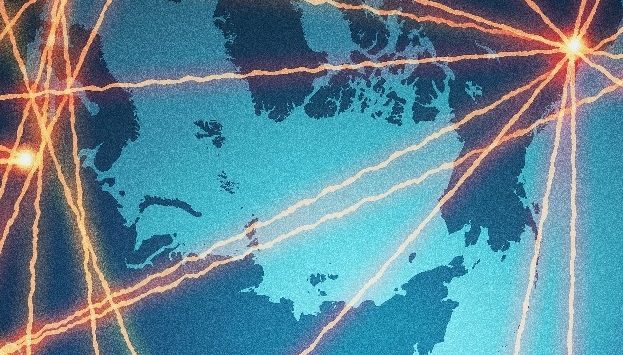CAROL ANN JONES
OCTOBER 31, 2019
I. INTRODUCTION
In this essay, Carol Ann Jones concludes: “Denying a country use of their nuclear combat forces could be the key to avoiding or limiting damage from a pending strike, but it could trigger unexpected actions from that country’s nuclear forces (assuming the weapons and launch capability were not damaged) and political leaders, its allies, and the international stage. The target country may perceive the Counter NC3 as hostile and formulate conventional and nuclear responses. This would be destabilizing and could open the door to escalation. Complexity increases when Counter NC3 operations are conducted concurrent with operations against the nuclear forces and leadership; and whether it is a bilateral or multilateral conflict.”
Carol Ann Jones supports management, oversight, and investment strategy of Department of Defense National Leadership Command Capability by analyzing policy and laws for consistency and authoring new or updated Presidential and Secretary of Defense policy when required; monitoring and evaluating the readiness effectiveness; and influencing the Department of Defense requirements, acquisition, and budget process. Through her position as chair of the NC3 Issues Working Group (NC3IWG), she provides leadership and guidance on NC3 roadmaps and architectures; identifies, analyzes, and staffs potential or reported issues; and advocates recommendations through appropriate forums to inform Senior Leader decisions. She leads multiple cross-community working groups to develop validated requirements, comprehensive assessments, and successful planning, programming, and budgeting in specific areas such as Low Frequency/Very Low Frequency communications, NC3 System High altitude Electromagnetic Pulse, the National and NC3 cryptographic modernization, and other complex projects.
The views expressed in this article are those of the author and do not reflect the official policy or position of the Department of Defense or the U.S. Government
Acknowledgments: The workshop was funded by the John D. and Catherine T. MacArthur
This report is published simultaneously here by Nautilus Institute and here by Technology for Global Security and is published under a 4.0 International Creative Commons License the terms of which are found here.
The views expressed in this report do not necessarily reflect the official policy or position of the Nautilus Institute. Readers should note that Nautilus seeks a diversity of views and opinions on significant topics in order to identify common ground.
The views expressed in this report do not necessarily reflect the official policy or position of the Nautilus Institute. Readers should note that Nautilus seeks a diversity of views and opinions on significant topics in order to identify common ground.
Banner image is by Lauren Hostetter of Heyhoss Design
II. NAPSNET SPECIAL REPORT BY CAROL ANN JONES
COUNTER NUCLEAR COMMAND, CONTROL, AND COMMUNICATIONS
OCTOBER 31, 2019
Summary
There are currently eight nations with a declared nuclear weapon capability. While the majority of press, diplomatic, and technical discussions on deterrence focus on warheads and delivery vehicles, the associated nuclear command, control, and communications (NC3) system is the part of the nuclear architecture that will ensure the decision maker is able to effectively employ the weapons. This paper will review terms (e.g., C2, C3, NC2, NC3, Counter NC3) to ensure common understanding; introduce the nuclear command, control, and stability framework (2007 by James Conley[1]) with the 2015 updates by the Virginia Tech Applied Research Corporation[2]; collect open source NC3 System information on the eight declared nuclear nations to fill in the framework; describe Counter NC3 activities; and introduce a few alternate NC3 approaches that may contribute to nuclear stability.
Background
The Defense Science Board, an advisory body for the Secretary of Defense and other senior Department of Defense (DoD) officials, provided a report in 2016 to aid the incoming Presidential Administration in addressing pressing national security issues and opportunities. They noted that deterring nuclear war is arguably the highest priority for the DoD and two of their seven defense priorities include weapons of mass destruction and nuclear war. They concluded that “nuclear” still matters, nuclear is in a class of its own, and nuclear cannot be wished away. The nuclear threshold may decrease owing to the stated doctrine and weapons developments of some states, e.g., “escalate to de-escalate,” and the introduction of new technology. However, the DoD’s nuclear knowledge base had atrophied and needed to re-established.[3]
General Martin Dempsey (US Army, Retired & former Chairman of the Joint Chiefs of Staff) agreed in his 2016 comments that the United States has lost the feel for deterrence with state actors due to the decades long gap since it actually had to deter state actors. He noted that today there is no Cold War balance of power, and the United States owns most of the advantages. However, the question is whether a country such as Russia would take some of the capabilities they’re developing asymmetrically—space, subsea, cruise missiles—and apply them against a country to try to, in their view, escalate to deescalate (and “win”). General Dempsey did comment that this country is regaining the feel for deterrence.[4]
There are currently eight nations with a declared nuclear weapon capability. Each has a unique motivation, concept of use, and architecture that should be included in any discussions on nuclear deterrence. While the majority of press, diplomatic, and technical discussions focus on warheads and delivery vehicles, it is the associated nuclear command, control, and communications (NC3) system that ensures the decision maker is able to effectively employ the weapons. As a critical part of the architecture, the NC3 system is part of the deterrence calculus. This paper will review terms (e.g., C2, C3, NC2, NC3, Counter NC3) to ensure common understanding; introduce the nuclear command, control, and stability framework (2007 by James Conley) with the 2015 updates by the Virginia Tech Applied Research Corporation; describe open source NC3 System information on the eight declared nuclear nations to fill in the framework; describe Counter NC3 activities; and introduce a few alternate NC3 approaches that may contribute to nuclear stability.
1: Terms
The general term command and control, sometimes shortened to C2, is the exercise of authority and direction by a properly designated commander over assigned and attached forces in the accomplishment of the mission.[5] Command, control, and communications (C3) resources provide seamless base-level and worldwide communication networks for voice, data, and imagery traffic of sufficient quality, reliability, and flexibility to ensure responsive support to U.S. forces.[6]
Applying the general to the specific mission area, nuclear command and control (NC2) is the exercise of authority and direction, through established command lines, over nuclear weapon operations. NC2 is supported by a survivable network of communications and warning systems (Nuclear C3, NC3) that ensure dedicated connectivity from the President to all nuclear-capable forces.[7] The United States 2018 Nuclear Posture Review describes an NC3 system that provides control of U.S. nuclear forces at all times, even under the enormous stress of a nuclear attack; assures the integrity of transmitted information; and possesses the resiliency and survivability necessary to reliably overcome the effects of nuclear attack. During peacetime and crisis, the NC3 system performs five crucial functions: detection, warning, and attack characterization; adaptive nuclear planning; decision-making conferencing; receiving Presidential orders; and enabling the management and direction of forces.[8]
In many ways nuclear operations are similar to other military operations, but they differ in a few ways. First, since the final authority for nuclear operations is often limited to one person (e.g., the President) or a very small group of people, NC2 and NC3 are generally designed with shorter, more responsive linkages between early warning and assessment, high level decisions, and direction to nuclear forces. Second, NC2 and NC3 are required to operate in all threat and crisis scenarios and, therefore, are designed to high standards of precision and resilience. Additionally, the negative aspects of C2/C3 are more pronounced—the NC2/NC3 must preclude nuclear operations when not authorized and also ensure nuclear operations can be terminated. This is often referred to as the “Always-Never” challenge of designing and developing an NC2 system. It requires a balance between ensuring nuclear weapons are always employed when properly authorized and never employed in the absence of proper authorization. The system should enable day-to-day readiness of the nuclear mission as well as actual weapon employment.[9]
Although dated, the DoD Directive on the U.S. Nuclear Command and Control System Support Staff[10] contains a definition of nuclear command and control that includes all three roles of the President as the nuclear decision authority. The obvious role is Commander in Chief through established command lines over nuclear weapons operations of military forces. There are two additional roles as Chief Executive over all government activities that support nuclear operations (e.g., the warhead production and support from the Department of Energy; legal review on use of nuclear weapons by the Department of Justice; and arms control treaties negotiated by the Department of State) and Head of State over required multinational actions that support nuclear operations (e.g., the alliances, discussions, and diplomatic signaling). The NC3 System should facilitate all roles involved in the nuclear state’s decision making.
Counter C3 measures aim to deny adversary commanders and other decision makers the ability to command and control their forces effectively.[11] Counter NC3 would occur when an adversary attacks the specific NC3 facilities, platforms, networks, and systems that affect the decision maker’s effective direction of nuclear forces.
2: Updated Nuclear Command, Control, and Stability Framework
To facilitate discussion on the role of NC2 within strategic stability, Jerome Conley mapped out a quad chart with positive and negative controls, with each having both procedural (plans, doctrine, training) and technical controls (equipment-based). For example, Negative Procedural Controls include the two-person rule for launch initiation or the separation of the warhead and the delivery vehicle. Negative Technical Controls include mechanical and electronic locks. Examples of Positive Procedural Controls include launch authority delegation and the initiation of bomber airborne alert. Positive Technical Controls include hardened communications and mobile command posts.[12] Table 1 shows the framework.
Table 1: Framework

Conley’s analysis identified that new and emerging nuclear states rely on Procedural measures due to limited expertise and financial resources. He also noted that while the framework may appear to identify a bias toward use or non-use of nuclear weapons, this is not an absolute predictor. Additional factors could be the personnel proficiency, equipment status, and the potentially chaotic transition from day-to-day to a crisis scenario.
In 2015, the Virginia Tech Applied Research Corporation (VT-ARC) acknowledged that Conley’s framework provided a simple way to describe the often overlooked NC2 in broader nuclear discussions. While it can be effective in describing a country’s nuclear capabilities, it is not an efficient tool for assessing nuclear stability dynamics between countries. The simplicity that is initially appealing to provide context may also overlook key NC2 system details (such as whether or how a state modifies its controls in a transition to crisis) or fail to appropriately weight controls. This team noted that terminology is not consistent between the operational and policy communities in the United States, nor on the international stage. They proposed definitions for key terms under the headings of C2, bias, policies, influences, and nuclear infrastructure. Further fine-tuning includes bias scales for use/non-use and procedures/technology and a representation of the state’s bias with stability dynamics where specific influences (e.g., internal, external, international, political, policies, crises, and innovation) could pull the NC2.[13]
Annex A, Declared Nuclear Nations Frameworks, contains a high-level overview of the eight declared nuclear countries. Limited resources (time and funding) constrained the depth of this research, and it was not possible to completely discern all quadrants for each country. While the cultures and history of each country play a significant part of their military approach, this dimension is not included. Additionally, a comprehensive understanding of the country’s nuclear operations can only be achieved at a classified level. Further, the framework is a great help in describing the command and control, but it is unable to predict general or specific reactions.
The Conley and VT-ARC framework provides valuable context to include the C2 perspective when discussing a state’s nuclear attitude, approach to deterrence, and possible nuclear actions. Some additional categories may help provide insights, including the funding stability of the entire nuclear program (appropriate sustainment, modernization, and/or growth); end-to-end NC3 (warning, conferencing, planning, and the credible communication paths with other nuclear nations in addition to the direction to nuclear forces); readiness status of equipment; personnel proficiency; inclusion of non-strategic nuclear forces; vulnerability to asymmetric threats (e.g., cyber, supply chain, special operations); and the number and mix of delivery systems. Where possible, intelligence collection is also a valuable source of additional information on nuclear nation capabilities and intentions.
3: Potential Counter NC3
Based on this high-level survey in Annex A, the nuclear states with a potential positive bias to use nuclear weapons are Russia due to its doctrine, rhetoric, and nuclear force modernization and North Korea due to its rhetoric. To a lesser degree, but worth mentioning, are India (potentially moving away from No First Use) and France (potentially using nuclear retaliation against state sponsors of terrorism). Other countries appear to maintain nuclear weapons in the name of deterrence, follow-on options, and self-defense. Several have broadened their intentions to consider nuclear weapons beyond responding to a nuclear attack. For example, the United States identified extreme circumstances for their nuclear use to include non-nuclear strategic attacks and attacks on command and control.
This backdrop provides context to discuss Counter C3 operations in the nuclear environment. Denying a country use of their nuclear combat forces could be the key to avoiding or limiting damage from a pending strike, but it could trigger unexpected actions from that country’s nuclear forces (assuming the weapons and launch capability were not damaged) and political leaders, its allies, and the international stage. Complexity increases when Counter NC3 operations are conducted concurrent with operations against the nuclear forces and leadership; and whether it is a bilateral or multilateral conflict.
There are several Counter NC3 approaches—electronic attack (EA, including both jamming and spoofing); physical damage/destruction (anti-satellite; nuclear destruction including Electromagnetic Pulse, undersea cable cuts, special operations); and cyber operations. They could impose temporary or permanent effects.
Table 2 below identifies the roles of a country’s nuclear decision maker, affiliated NC3 support, possible Counter NC3 activities, and questions to be considered with Counter NC3. The three distinct roles identified in Section 1 are called out individually, with a cross-cutting category of the leader or National Command Authority. Targets include the decision maker and communications, which include infrastructure, facilities, and links (radio frequency, terrestrial). Methods include power interruptions, position/navigation/timing (PNT) spoofing, electromagnetic pulse, jamming, and cyber. For a simple example, if a country wanted to deny effective direction of nuclear forces, operations could be planned against the PNT sources—the desired nuclear result would be inaccurate targeting from launch/destination coordinates and communications glitches. In this Counter NC3 operation, planning should evaluate collateral damage to conventional military and civil use of the PNT source. The target country may perceive the Counter NC3 as hostile and formulate conventional and nuclear responses. This would be destabilizing and could open the door to escalation.
There are many considerations identified above that must be addressed to determine the probability of achieving the desired effect to be gained by Counter NC3. Even in an overtly declared nuclear conflict, a nation’s NC3 is part of the system enabling nuclear safety and security. It is not difficult to identify circumstances where Counter NC3 could complicate or even provoke a nuclear situation. Even when clear policy exists, the unique stresses associated with weapons may lead to behavior inconsistent with that policy. Countries considering Counter NC3 need to understand the target country’s culture, history, rationale for nuclear weapons, durability of its nuclear command and control framework, relationship between nuclear and conventional military operations, and possible response options to begin calculating the military and political ramifications.
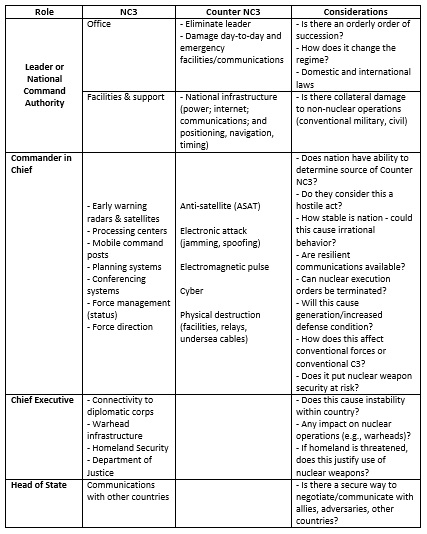
Table 2: Counter NC3 and Considerations4: Alternatives to Counter NC3
Counter NC3 activities may be military imperatives in an effort to deter nuclear strikes. In this circumstance, they should initially focus on thoroughly disabling the portion of the command and control associated with mating weapons and delivery vehicles. If that had already happened, or in the case of underway nuclear weapon-equipped submarines, targeting the conferencing and force direction portions could prevent the reception of launch orders.
ConclusionThis paper reviewed terms (e.g., C2, C3, NC2, NC3, Counter NC3) to ensure common understanding; introduced the nuclear command, control, and stability framework (2007 by James Conley) with the 2015 updates by the Virginia Tech Applied Research Corporation; filled in the framework on the eight declared nuclear nations with open source information; described considerations to Counter NC3 including those that could be destabilizing; and introduced a few alternate approaches to improve NC3 stability between nuclear countries.
It identified concerns that Counter NC3 activities could create a destabilizing environment for declared nuclear countries. Additional research on framework details, technical details of Counter C3 activities, and in-depth Counter NC3 war gaming may add depth to this topic. Excursions on general war gaming that include nuclear operations, NC3, and Counter NC3 and potential non-state nuclear actors would also contribute to nuclear deterrence discussions.
Annex A:
Declared Nuclear Nations Frameworks
Table 3: United States[15] [16]
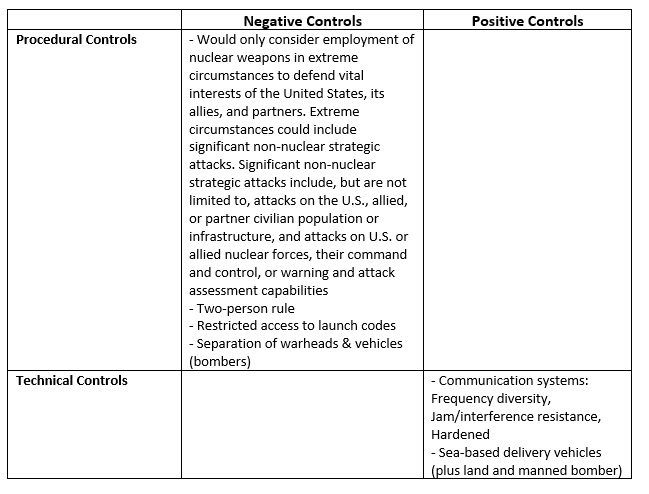
Although the 2018 statements are generally consistent with a bias against using nuclear weapons, the United States has identified some specific “extreme” circumstances beyond a nuclear attack where they will consider using nuclear weapons. It is also the policy of the United States to retain some ambiguity regarding the precise circumstances that might lead to a U.S. nuclear response.
Table 4: China[17]

China is focusing on conventional forces, with interest in conventional superiority in the Western Pacific. They are estimated to have 270 nuclear warheads. China is concerned about the U.S. missile defense and is deploying Multiple Independently targetable Re-entry Vehicles on some of its silo-based missiles.
Table 5: United Kingdom[18]

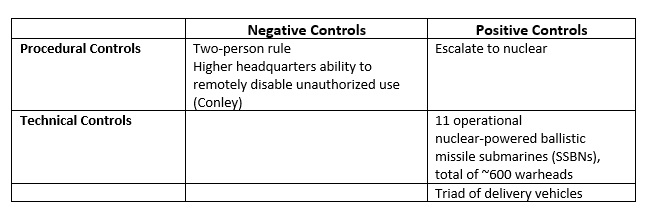
Russia has several strategic challenges such as demographic issues and China. They are modernizing all its nuclear forces including road mobile and multiple independent re-entry vehicles, new ballistic missile submarines, modern bombers, and a new nuclear-armed cruise missile. The focus appears to be ensuring Russian nuclear forces can penetrate any U.S. missile defense system. On several occasions, Russian officials have publicly threatened to use nuclear weapons against U.S. allies. Thus, Russia appears to be biasing toward the potential use of all military capability, including nuclear weapons, in “overturning the current post-Cold War settlement and restoring Russia’s power position.”
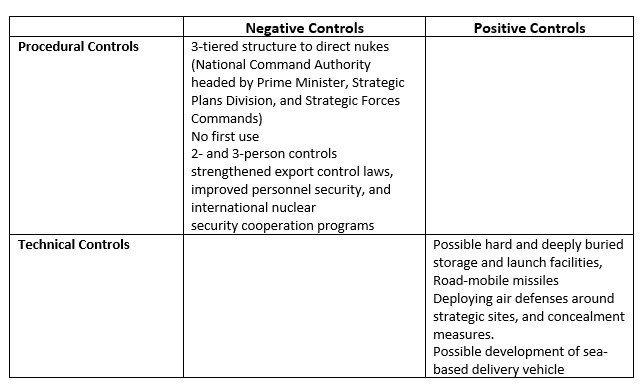
Michael Tkacik states that India is engaged in both a qualitative and quantitative build-up of nuclear weapons and this is slowly pushing India away from No First Use doctrine.
Table 8: Pakistan[25]
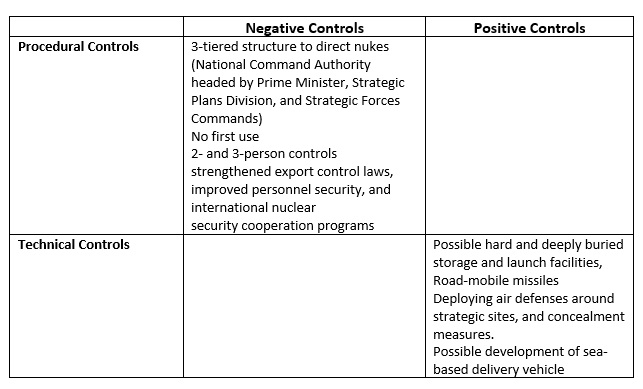
Table 9: France[26]
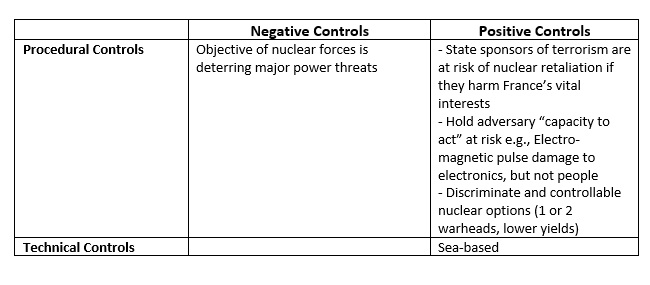
Table 10: North Korea[27]

Bibliography
(n.d.). Retrieved from https://www.thefreedictionary.com/counter+command%2C+control+and+communications
Ahmed, A. (2011, July 12). Indian Defence Review. Retrieved from http://www.indiandefencereview.com/spotlights/indian-nuclear-command-and-contro-i/
Board, D. S. (2016). Seven Defense Priorities. Washington DC: Department of Defense.
Comptroller, D. (n.d.). DoD Comptroller. Retrieved from comptroller.defense.gov: https://comptroller.defense.gov/Portals/45/Documents/defbudget/fy2004/budget_justification/pdfs/01_Operation_and_Maintenance/Overview_Book/22_C3_Programs.pdf
Conley, J. M. (2007). Nuclear Command and Control in the Twenty-first Century: Trends, Disparities, and the Impact on Stability. Debating 21st Century Nuclear Issues, pp. 228–230.
Defense, D. o. (n.d.). Homeland Security Digital Library. Retrieved from DoD Directive 3150.06 U.S. Nuclear Command and Control System Support Staff: https://www.hsdl.org/?view&did=466992
Dempsey, M. (2016). General, US Army, Retired. (P. Feaver, Interviewer)
Farlex. (n.d.). The Free Dictionary. Retrieved from https://www.thefreedictionary.com/counter+command%2c+control+and+communications
Kumar, R. (2006, September). Indian Nuclear Command and Control Dilemma. Retrieved from https://apps.dtic.mil/dtic/tr/fulltext/u2/a457184.pdf
NMHB 2016 Chapter 6: Nuclear Command and Control System. Retrieved from Nuclear Matters Handbook 2016: https://www.acq.osd.mil/ncbdp/nm/NMHB/chapters/chapter_6.htm
Nikitin, P. K. (2016). Pakistan’s Nuclear Weapons. Washington, DC: Congressional Research Service.
Norris, H. M. (2017). Russian nuclear forces, 2017. Bulletin of the Atomic Scientists, 73:2, pp. 115–126.
Norris, H. M. (2018). North Korean nuclear capabilities, 2018. Bulletin of Atomic Scientists, 74:1, pp. 41–51.
(2018). Nuclear Posture Review. Washington DC: Office of the Secretary of Defense.
Payne, K. B. (2017, Summer). Thinking Anew about US Nuclear Policy toward Russia. Strategic Studies Quarterly, pp. 13–25.
Rose, F. A. (2018). Senior Fellow in Security and Strategy. U.S. House of Representatives Committee on Foreign Affairs Subcommittee on Terrorism, Nonproliferation, and Trade (pp. 1–18). Washington, DC: Brookings.
(2018, September). DOD Dictionary and Terminology Repository. Retrieved from Joint Electronic Library: http://www.jcs.mil/Portals/36/Documents/Doctrine/pubs/dictionary.pdf?ver=2018-09-28-100314-687
Tkacik, M. (2017). India nuclear weapons: No first use or no full disclosure? Defence Studies, pp. 84–109.
Virginia Tech Applied Research Corporation. (2015). Nuclear Command, Control, and Stability Framework. San Diego: Naval Postgraduate School.
Yost, D. S. (2006, July). France’s New Nuclear Doctrine. International Affairs (Royal Institute of International Affairs 1944-) Vol 82, No. 4, pp. 701–721.
III. ENDNOTES
[1] Provided in Virginia Tech Applied Research Center, 2015)
[2] (Virginia Tech Applied Research Corporation, 2015)
[3] (Board, 2016, pp. 9, 22-27)
[4] General Martin Dempsey, former chairman of the Joint Chiefs of Staff. Interviewed by Peter Feaver, professor of political science and public policy, April 11, 2016, in Durham. http://livinghistory.sanford.duke.edu/interviews/martin-dempsey/
[5] (Staff, 2018)
[6] (Comptroller)
[7] (Matters)
[8] (Nuclear Posture Review, 2018)
[9] (Conley, 2007)
[10] (Defense)
[11] (Farlex, n.d.)
[12] (Conley, 2007)
[13] (Virginia Tech Applied Research Corporation, 2015, pp. 12-26)
[14](Rose, 2018)
[15] (Nuclear Posture Review, 2018)
[16] (Matters)
[17] (Rose, 2018)
[18] (Conley, 2007)
[19] (Payne, 2017)
[20] (Norris H. M., 2017)
[21] (Rose, 2018)
[22] (Kumar, 2006)
[23] (Ahmed, 2011)
[24] (Tkacik, 2017)
[25] (Nikitin, 2016)
[26] (Yost, 2006)
[27] (Norris H. M., 2018)
IV. NAUTILUS INVITES YOUR RESPONSE
The Nautilus Asia Peace and Security Network invites your responses to this report. Please send responses to: nautilus@nautilus.org. Responses will be considered for redistribution to the network only if they include the author’s name, affiliation, and explicit consent


